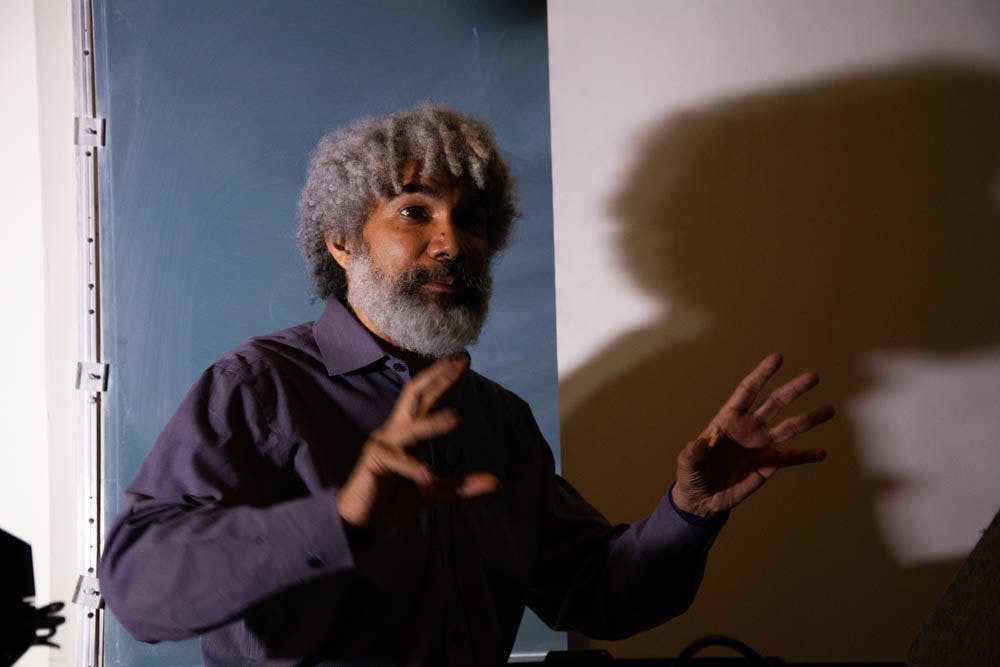A Klu Klux Klan hood in a baby carriage; a whipping post that resembles a crucifix encircled by exquisite salon chairs; a jet-black Venetian chandelier named “Othello’s Light.” Can you guess what all of these things have in common?
These are just a few of the most recognized artworks by Fred Wilson.
Fred Wilson, a New York-based conceptual artist, brings representation and visibility of racial minority subjects by recontextualizing mainstream spaces in museums and cultural institutions. He primarily uses the mediums of museum collection and installation to conduct intriguing juxtapositions that spur diverse perceptions of history in his exhibits.
Wilson presented a lecture to about 80 students and art enthusiasts Jan. 15 at Little Hall. The UF School of Art + Art History hosted Wilson as part of the Spring 2019 Wiesenfeld Visiting Artist Lecture Series.
Wilson’s bold, deliberate method of exploring dynamics of power and privilege are shocking.
For instance, at the entrance of his exhibition “Mining the Museum” (1992-1993) at the Maryland Historical Society, an installation piece of three pedestals on one side of the room displays busts of Napoleon, George Washington and Benjamin Franklin, while on the other side there are empty pedestals with the names of famous African-Americans from Maryland such as Harriet Tubman, Benjamin Banneker and Frederick Douglass. Between these two rows sits a golden trophy with the word “truth” engraved on it.
Through this installation, Wilson said he hopes viewers contemplate whose truth is presented inside a museum.
“I want people to come to a museum and know that everything is controlled and has meaning,” he said.
Oftentimes, Wilson discovers the heart of his work by digging through the storage of museums.
While sifting through the shelves of the storage unit at the Dartmouth College Hood Museum of Art, Wilson found and inspected a head sculpture that he recognized from his readings. It was of Ota Benga, a black man who was kidnapped from the Congo and taken for display at the St. Louis World Fair in 1904 in a cage with apes.
The artist paid respect to the original sculpture and modified it to wear a white scarf and engraved words at the mantle reading, “I’m the one who left and didn’t come back.”
Fred Wilson, a New York-based conceptual artist, brings representation and visibility of racial minority subjects by recontextualizing mainstream spaces in museums and cultural institutions. He presented a lecture to about 80 students and art enthusiasts Jan. 15 at Little Hall.



